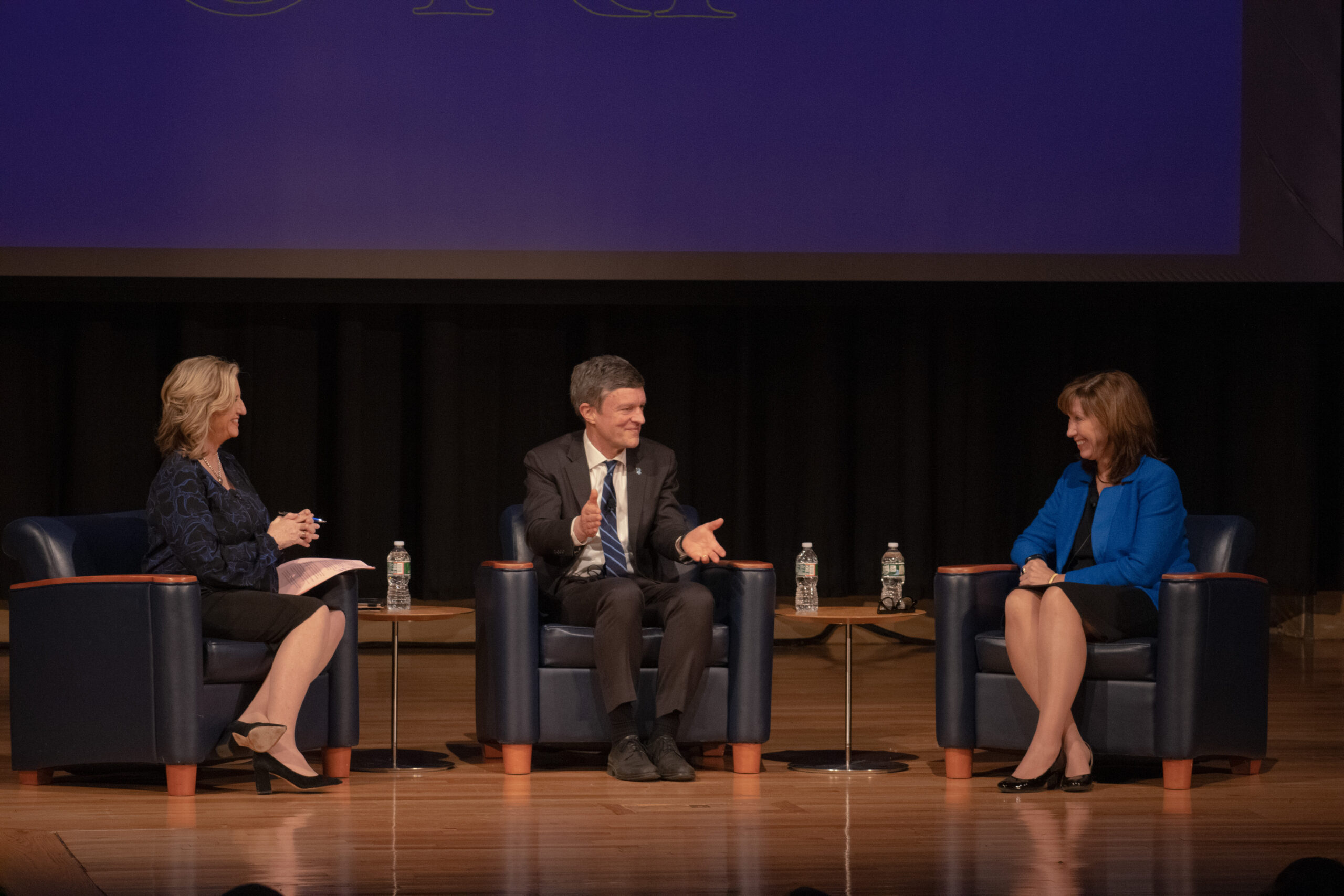President Parlange from his state of the university address. PHOTO CREDIT: Eddie Melfi | Staff Photographer
President Marc Parlange introduced his 10-year strategic plan in his State of the University Address on Wednesday, Feb. 1.
Parlange said the plan is associated with the change of president. The previous University president, David Dooley, had a strategic plan. When Parlange took Dooley’s position, the University of Rhode Island, there were many things that he had to do to keep the plan going.
“One of them was to hire certain positions including the vice president of communications and provost, the vice president of community, equity, and diversity and many deans,” Parlange said. “We had to develop what kind of University we wanted to become and I wanted to be a part of it.”
He said there were four priorities or phases to the plan. The first one is broadening the impact in the state of Rhode Island. He wants to invest in higher education around the world in order to diversify the economy and build a University that addresses important topics related to Rhode Island, such as the blue economy.
According to the United Nations, the blue economy is the “sustainable use of ocean resources for economic growth, improved livelihoods, and jobs while preserving the health of the ocean ecosystem.” The European Commission defines it as “all economic activities related to oceans, seas and coasts.”
Parlange added that the second priority is enhancing the students’ experience, from athletic programs to thinking about active learning, research experiences or graduate school. He wants students to have a good career education while being aware of their mental health and well-being.
The third priority is about fostering an inclusive culture so that students feel valued and part of the University of Rhode Island.
“It’s really about being able to recruit outstanding students, faculty and staff. We want to keep them and make sure they feel at home,” Parlange said.
The final priority is preparing the University for the future financially and physically. The plan will focus on the physical health of the campus and making sure that URI has the necessary revenue to support the programs and new initiatives in everything from education to research and operations, Parlange said.
This plan will make URI better because universities are all about the people and culture, according to Parlange. The plan has a series of key performance indicators for the four areas where they look to see if they’re achieving what they set out to do, which is important.
“We have to ask ourselves if we’re supporting our research, having better papers in better journals, are we attracting better students and partnerships with the industry,” Parlange said.
Parlange included that the plan was advised by a steering committee, which he chaired with the President of the Faculty Senate. The committee included University administrators, students, faculty and staff. The committee’s goal was to create opportunities by talking to the Student Senate, the chambers of commerce, the rotary clubs and alumni associations. They received over 800 pages of input and comments from thousands of people.
Ellen Reynolds, the interim vice president of student affairs, said that prior to the strategic plan, it was called the academic plan for the institution. Each division, including the student affairs, admin and finance, has its own strategic plan and all of them tie into the 10-year plan.
“This plan is comprehensive and includes all aspects of the University,” Reynolds said. “You think about the admin, finance, student, athletic and academic affairs and they represent the entire university community.”
She also said the four priorities identified are there to ensure that the institution is moving forward toward that one vision. They had to talk with the URI community asking what the flagship research institution for Rhode Island needs to include in order to achieve its goal.
She added that Student Affairs focuses on student engagement and success and opportunities for learning and research. For example, they enhance student achievement by cultivating an engaged and inclusive learning environment outside of the classroom or academic setting.
Additionally, she said each priority has several goals underneath them all adding up to the question of how they compare to other state or national levels. All of these actions will be worked on throughout the year so it’s not exclusive to just one, it’s all of them.
“I would say this is a crucial time for the University,” Reynolds said. “We are embarking on a brand new plan that is hopefully represented by the entire community, students, faculty and staff. From a student affairs perspective, it’s exciting to be a part of President Parlange’s vision for URI.”

